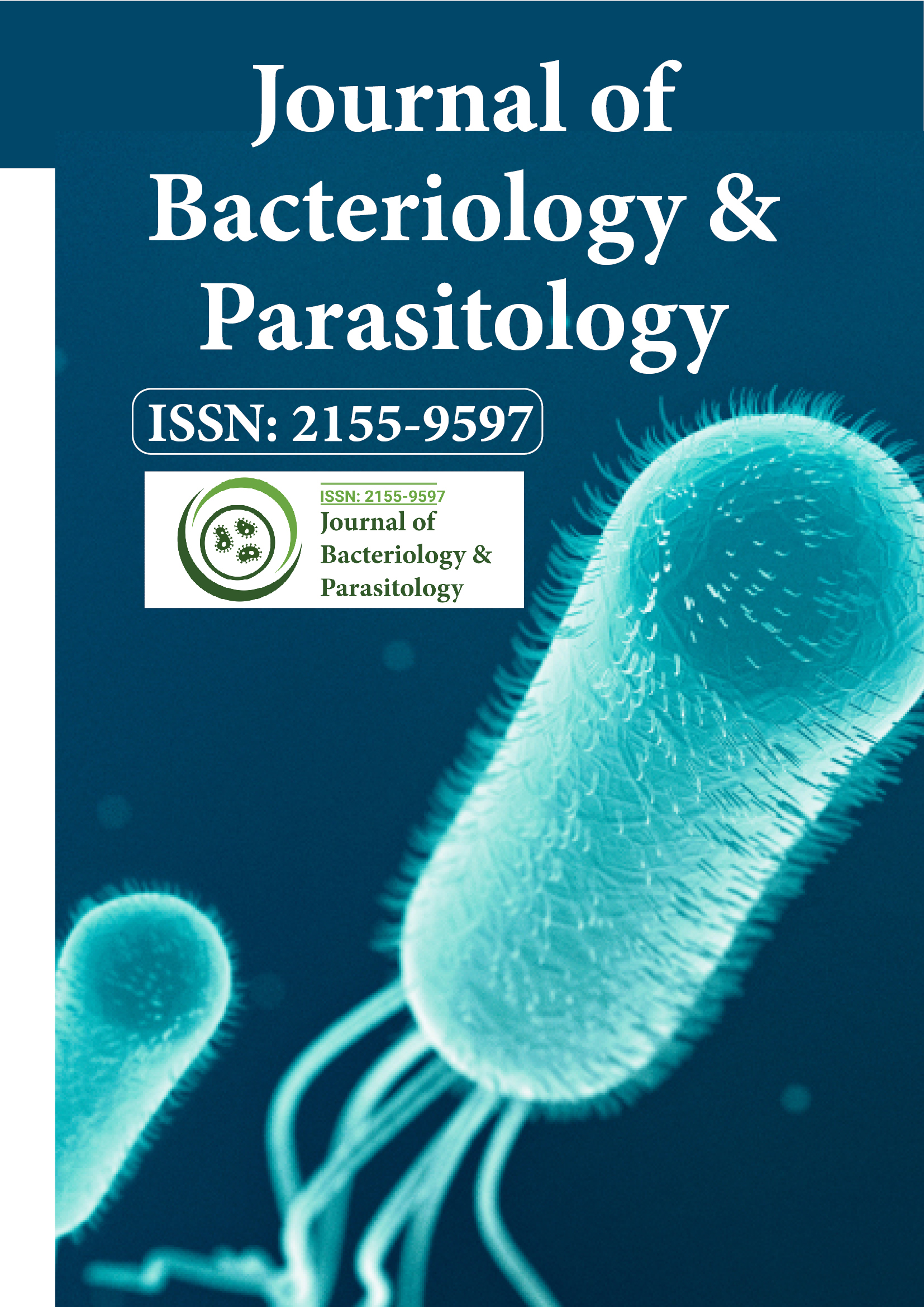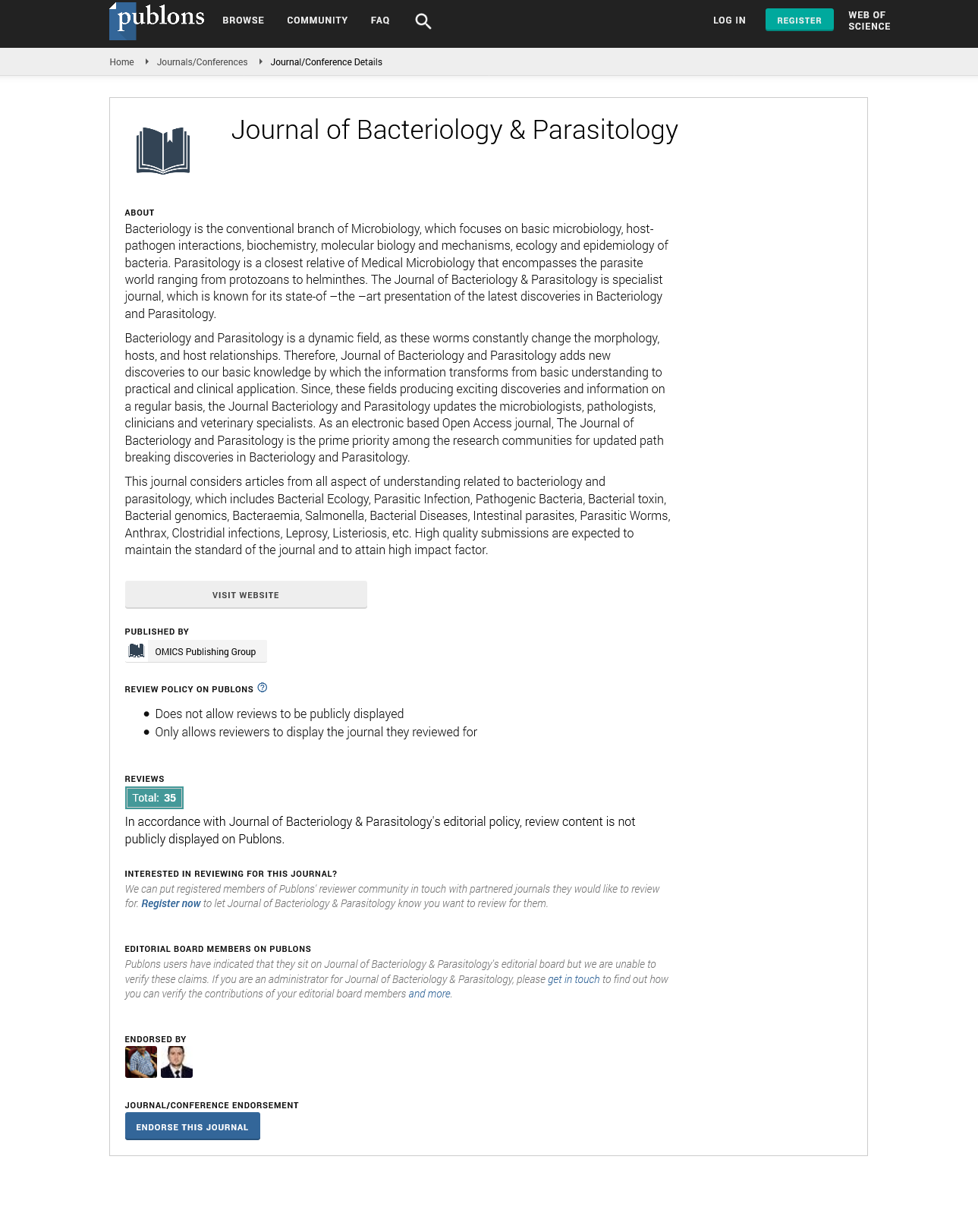Indexed In
- Open J Gate
- Genamics JournalSeek
- Academic Keys
- JournalTOCs
- ResearchBible
- Ulrich's Periodicals Directory
- Access to Global Online Research in Agriculture (AGORA)
- Electronic Journals Library
- RefSeek
- Hamdard University
- EBSCO A-Z
- OCLC- WorldCat
- SWB online catalog
- Virtual Library of Biology (vifabio)
- Publons
- MIAR
- Geneva Foundation for Medical Education and Research
- Euro Pub
- Google Scholar
Useful Links
Share This Page
Journal Flyer

Open Access Journals
- Agri and Aquaculture
- Biochemistry
- Bioinformatics & Systems Biology
- Business & Management
- Chemistry
- Clinical Sciences
- Engineering
- Food & Nutrition
- General Science
- Genetics & Molecular Biology
- Immunology & Microbiology
- Medical Sciences
- Neuroscience & Psychology
- Nursing & Health Care
- Pharmaceutical Sciences
Perspective - (2025) Volume 16, Issue 2
Antibiotic Resistance in HelminthâAssociated Bacteria: Patterns and Implications
Wei Huang*Received: 24-Mar-2025, Manuscript No. JBP-25-29949; Editor assigned: 26-Mar-2025, Pre QC No. JBP-25-29949; Reviewed: 09-Apr-2025, QC No. JBP-25-29949; Revised: 16-Apr-2025, Manuscript No. JBP-25-29949; Published: 23-Apr-2025, DOI: 10.35248/2155-9597.25.16.543
Description
Helminths parasitic worms including species such as Ascaris, Schistosoma, and filarial nematodes often harbor bacterial communities in their internal or external surfaces. These bacteria may play roles in nutrition, immunity modulation, or even in enhancing worm survival. Of growing concern is the prevalence of antibiotic resistance among bacterial strains associated with helminths. This article examines patterns of resistance in such bacteria, explores how resistance emerges, and discusses consequences for treatment and control of parasitic infections.
Multiple surveys in endemic zones have isolated bacteria from gut regions of helminths and their sheath or cuticle. Species from the genera Escherichia, Pseudomonas, Enterococcus, Staphylococcus, and Bacteroides appear frequently. In these isolates, resistance to common antibiotics such as tetracycline, ampicillin, gentamicin, and sulfamethoxazole-trimethoprim occurs at worrying rates. One study in rural clinics found that over half of Enterococcus strains from Ascaris lumbricoides were resistant to tetracycline, and many E. coli isolates showed multiâ?drug resistance.
Emergence of resistance in these bacteria occurs via multiple mechanisms. Horizontal gene transfer plays an important role — plasmids carrying resistance genes move between bacterial taxa within the worm gut or on surfaces. Selective pressure arises both inside the helminth if antibiotics taken by host reach parasite tissues and outside, in the shared environment. For example, if humans or livestock use antibiotics improperly, residues enter soil or water; helminth eggs or larvae in soil encounter bacteria with resistance genes. When larvae are ingested by hosts, bacteria persist.
Treatment of helminth infections often includes combination therapies. Administration of anthelminthics sometimes occurs alongside antibiotics when coâ?infections are present. However, when bacterial symbionts of worms are resistant, antibiotic efficacy diminishes; coâ?treatment may fail to address bacterial infections that can exacerbate pathology. In addition, treatments that damage worm integrity might release bacteria into host tissues or bloodstream, risking systemic infection.
Control programs that target helminths must consider antibiotic resistance patterns in associated bacteria. Surveillance in endemic areas should include culturing bacterial isolates from helminth samples and testing for resistance to local antibiotics. Data obtained can guide formulation of treatment protocols that avoid use of antibiotics with high resistance prevalence. For example, if local E. coli strains from worm guts show widespread resistance to sulfamethoxazole-trimethoprim, alternative agents or dose adjustments may be necessary.
Sanitation plays a central role. Improved water supply, safe disposal of human and animal waste, and education about antibiotic misuse all reduce selective pressure and environmental gene transfer. Agricultural practices should control antibiotic runoff. In livestock systems, feeding, medicating, and waste disposal methods affect bacterial populations in soil; reducing antibiotic residues will reduce resistance selection in soil bacteria, which may associate with helminth larvae or eggs.
Conclusion
Overall, bacterial antibiotic resistance in the context of helminthâ?associated bacteria represents a hidden threat. Treatment programs that focus exclusively on parasite elimination without considering coâ?resident bacteria may experience reduced effectiveness, unexpected complications, and the risk of facilitating spread of resistant bacteria into wider communities. Integrative approaches in public health, parasitology, and microbial genetics are needed to ensure that worm control does not unintentionally support antibiotic resistant pathogens in both human and animal populations.
Citation: Huang W (2025). Antibiotic Resistance in Helminth?Associated Bacteria: Patterns and Implications. J Bacteriol Parasitol. 16:543.
Copyright: © 2025 Huang W. This is an open-access article distributed under the terms of the Creative Commons Attribution License, which permits unrestricted use, distribution and reproduction in any medium, provided the original author and source are credited.

